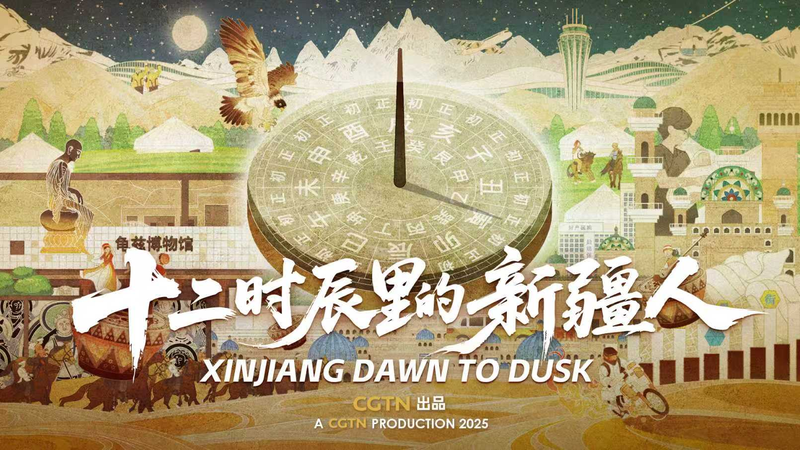CGTN's new documentary "Xinjiang Dawn to Dusk" invites viewers on a journey through the Xinjiang Uygur Autonomous Region of the Chinese mainland, using the ancient 12 shi-chen time segments to weave a four-season narrative of daily life.
The 12 shi-chen—Zi, Chou, Yin, Mao, Chen, Si, Wu, Wei, Shen, You, Xu and Hai—divide the day into two-hour intervals that mirror nature's cycles. This wisdom has guided farmers and traders in Xinjiang for centuries, harmonizing work, rest and festivity with sunrise, moonrise and everything between.
Over four seasons and through the stories of more than 20 residents—from shepherds in the Tianshan foothills to modern entrepreneurs in Urumqi—"Xinjiang Dawn to Dusk" captures the human heartbeat of a region alive with cultural fusion and innovation.
At dawn (Zi) in spring, carpet weavers gather in villages to dye wool in vibrant hues. By midday (Wu), merchants trading on Silk Road-inspired routes negotiate deals via smartphone apps, blending ancient exchange with digital commerce. At night (Hai), families in Kashgar share traditional melodies under starlit skies.
Beyond its cinematic beauty, the documentary poses a universal question: What is time? From Egypt's Nile-timing traditions to today's atomic clocks, humanity has sought to measure moments. Xinjiang's 12 shi-chen offer a timeless answer, reminding global audiences of our shared rhythm with nature.
For young global citizens, entrepreneurs and travelers alike, "Xinjiang Dawn to Dusk" is more than a film—it's an invitation to explore how cultural heritage shapes modern life, and to rethink the way we mark our days across continents and cultures.
Reference(s):
"Xinjiang Dawn to Dusk" | The Pulse of Xinjiang, Measured in Time
cgtn.com




